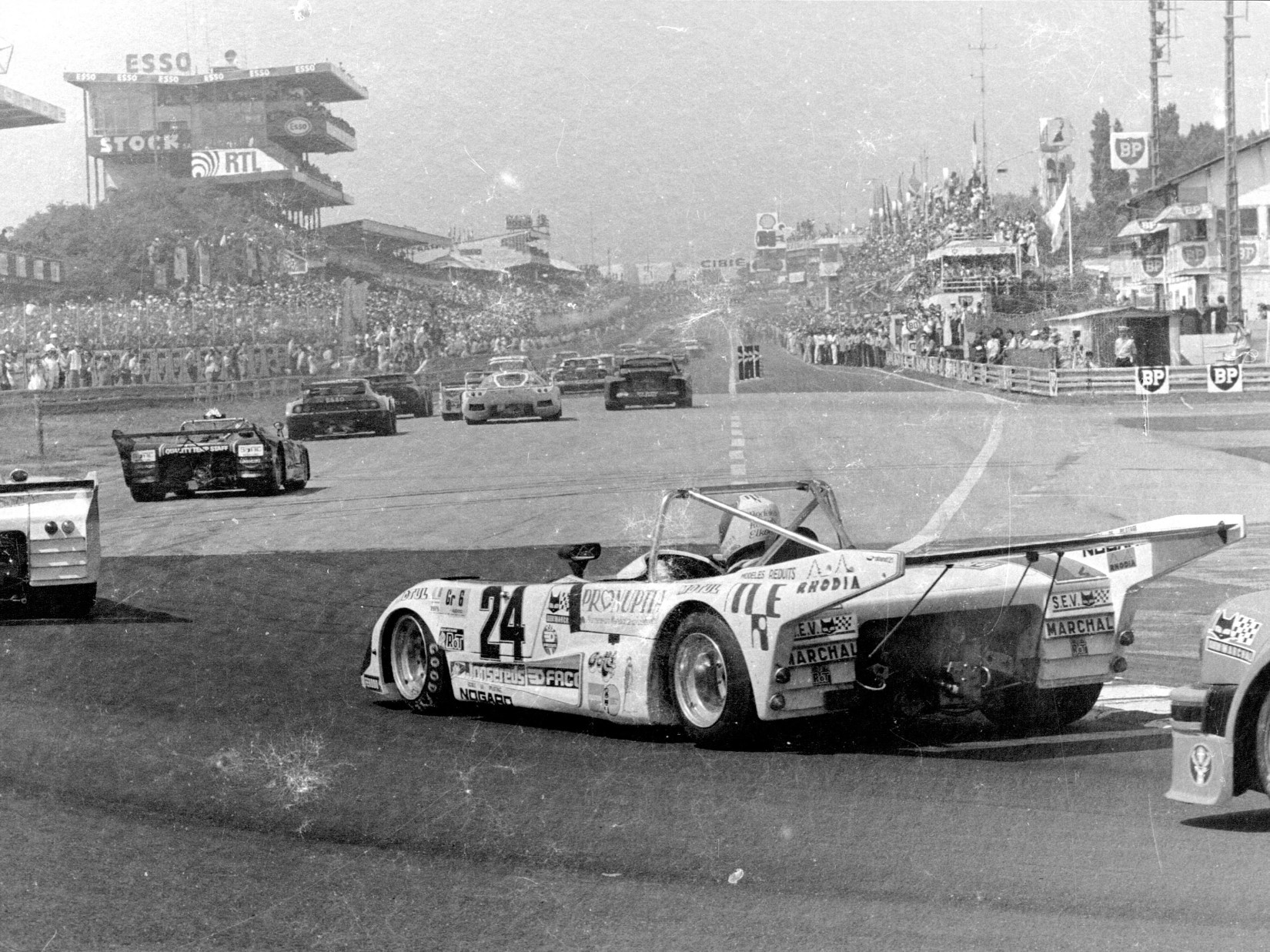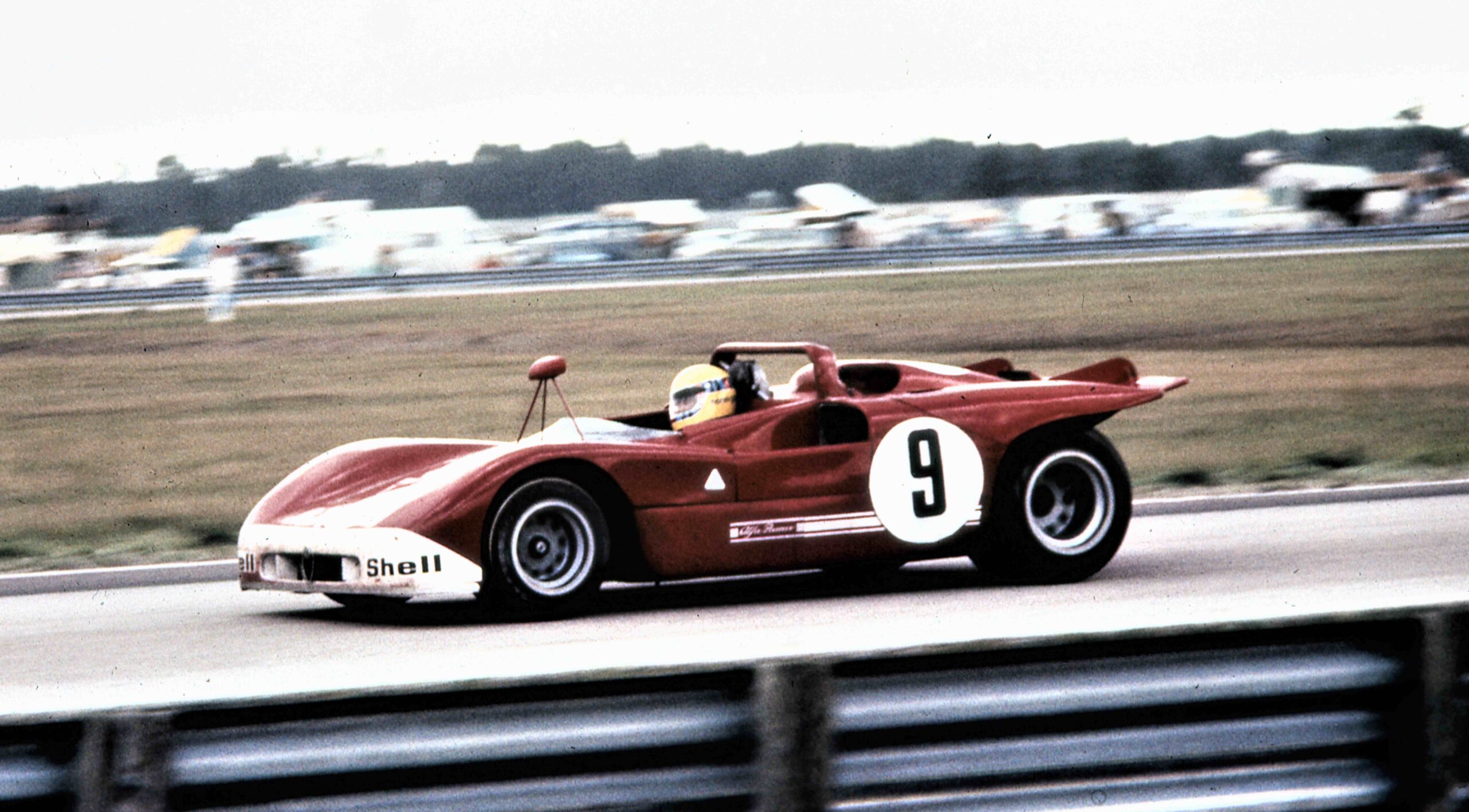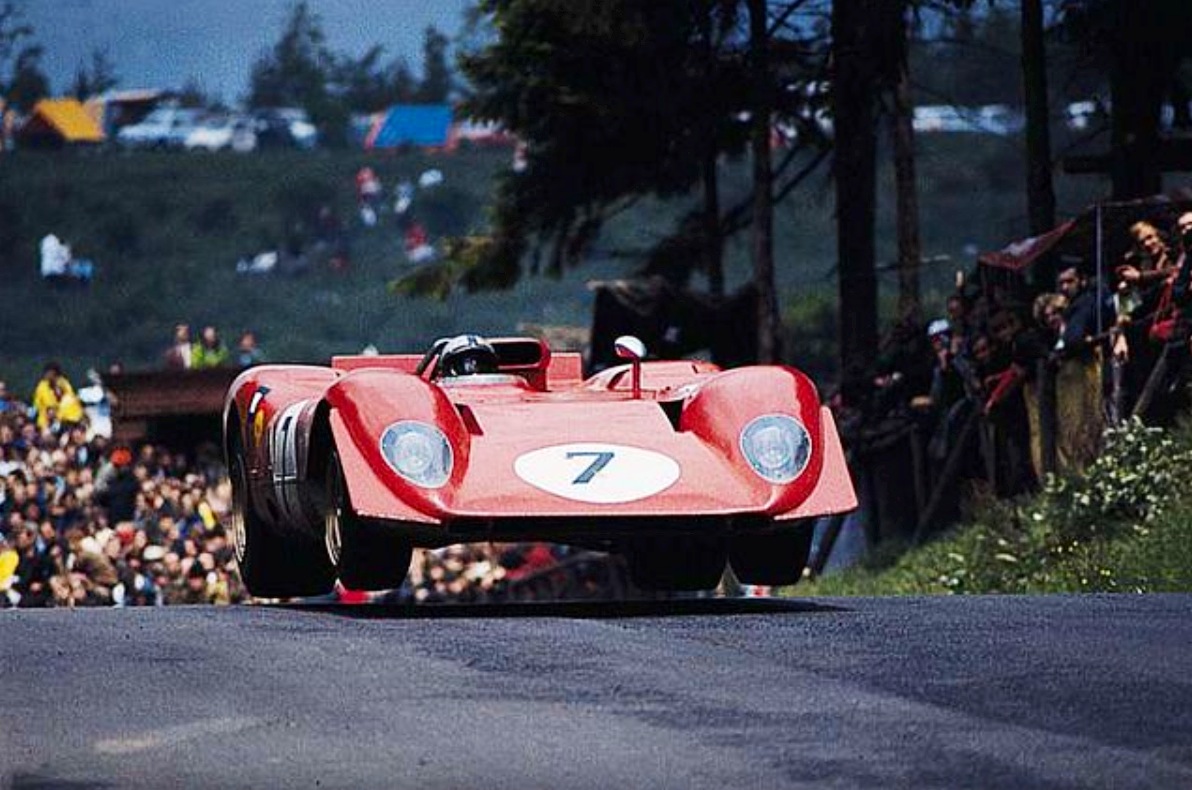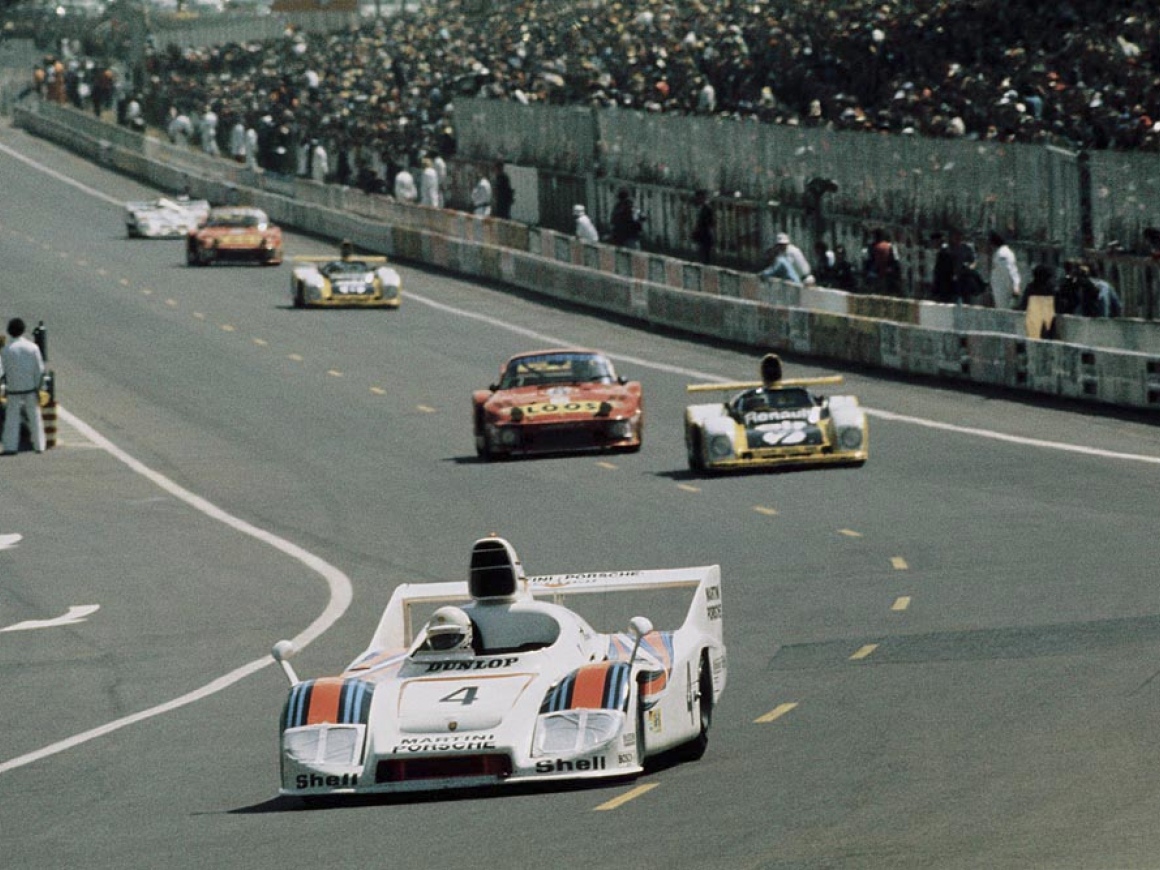FIA Group 6

About this group
Discover the history
The Fédération Internationale de l’Automobile (FIA) introduced Group 6 as a classification for prototype sports cars, aiming to foster innovation and competition in endurance racing. This category underwent two distinct phases: the Prototype-Sports Cars (1966–1971) and the Two-Seater Racing Cars (1976–1982). Throughout its existence, Group 6 played a pivotal role in shaping sports car racing, witnessing the emergence of iconic vehicles and technological advancements.
Group 6 Prototype-Sports Cars (1966–1971)
In 1966, the FIA established Group 6 Prototype-Sports Cars alongside Group 4 Sports Cars. While Group 4 required a minimum production of 50 units for homologation, Group 6 had no such production prerequisites, allowing manufacturers greater flexibility in design and engineering. This freedom led to the development of highly specialized racing machines, unencumbered by the need for road-going counterparts.
Initially, Group 6 regulations did not impose an engine displacement limit, encouraging manufacturers to experiment with various powertrain configurations. However, in 1968, the FIA introduced a 3.0-liter engine capacity cap for Group 6 cars. This change aimed to enhance safety and competitiveness, aligning prototype specifications with those of Formula One vehicles of that era. Concurrently, the FIA merged the separate championships for Group 6 and Group 4 into a singular International Championship for Makes, fostering direct competition between prototypes and production-based sports cars.
The 24 Hours of Le Mans, a cornerstone of endurance racing, featured Group 6 cars prominently during this period. Notably, Group 6 prototypes secured overall victories at Le Mans in 1966 and 1967, showcasing their performance capabilities. Despite their prowess, the category faced challenges, including escalating costs and technological disparities among competitors. These issues prompted the FIA to reevaluate the classification system.
In 1972, the FIA restructured its categories, transitioning Group 6 Prototype-Sports Cars into the newly defined Group 5 Sports Cars. This reorganization aimed to streamline classifications and address the evolving landscape of sports car racing. The original iteration of Group 6 thus concluded, leaving a legacy of innovation and memorable competition.
Group 6 Two-Seater Racing Cars (1976–1982)
The FIA resurrected the Group 6 designation in 1976, this time focusing on Two-Seater Racing Cars. This revival sought to rejuvenate prototype racing by offering a platform for advanced engineering while maintaining cost-effectiveness. The new Group 6 regulations delineated engine capacity limits based on engine origin and aspiration:
- 5000cc: For engines derived from production car blocks.
- 3000cc: For naturally aspirated racing engines.
- 2140cc: For turbocharged racing engines, applying a 1.4 equivalence factor to align with naturally aspirated counterparts.
Despite the FIA’s intentions, the revived Group 6 category initially struggled with limited manufacturer participation and small entry fields. In response, the championship was downgraded to the European Sports Car Championship in 1978, but this too faced challenges, leading to its discontinuation after just one season.
Recognizing the need for a more inclusive approach, the FIA allowed Group 6 cars to compete in the World Championship for Makes from 1979 onward. However, only production-based vehicles were eligible to accrue points toward the manufacturers’ championship, placing Group 6 prototypes in a unique position within the competition.
In 1981, the FIA introduced an official Drivers’ Championship, permitting pilots of Group 6 cars to contend for individual honors. This move acknowledged the skill and commitment of drivers competing in the prototype category. The following year, Group 6 was effectively superseded by the advent of the Group C Sports Car class. Nonetheless, as a transitional measure, Group 6 vehicles were allowed to participate in the 1982 World Endurance Championship alongside the new Group C entrants. During this final phase, Group 6 cars adhered to a maximum engine capacity of 3000cc.
Throughout its second tenure, Group 6 prototypes demonstrated remarkable performance, securing overall victories at the 24 Hours of Le Mans in multiple years, except for 1979 and 1982. These successes underscored the category’s competitive spirit and the technological advancements achieved by participating manufacturers.




Technical Specifications Overview
The technical regulations governing Group 6 cars evolved over time, reflecting the FIA’s objectives to balance innovation, performance, and safety. Key aspects of the technical framework included:
- Chassis and Bodywork: Group 6 regulations permitted significant flexibility in chassis design, enabling manufacturers to explore various materials and constructions to optimize weight and rigidity. Aerodynamic enhancements were also a focal point, with teams developing bodywork to reduce drag and increase downforce, thereby improving stability and handling at high speeds.
- Engine Specifications: The initial phase of Group 6 did not impose engine displacement limits, allowing a diverse range of powertrains. However, the 1968 regulation introduced a 3.0-liter cap, aligning with contemporary Formula One standards. In the second phase (1976–1982), engine capacities were stratified based on origin and induction type, with specific limits for production-based engines, naturally aspirated racing engines, and turbocharged units.
- Weight and Dimensions: While specific weight requirements varied over the years, the regulations consistently emphasized a balance between minimal weight and structural integrity. Dimensional constraints were also applied to ensure safety and maintain competitive parity among different vehicle designs.
- Safety Features: As speeds and technological complexities increased, the FIA mandated the incorporation of advanced safety features. These included reinforced roll cages, fire suppression systems, and improved fuel cell designs to mitigate the risks associated with high-speed endurance racing.
- Fuel and Refueling: Regulations specified fuel types and refueling procedures to ensure safety during
Notable entrants of the FIA Group 6 category
The following list contains the most important cars in the Group 6 homologation history:
- Porsche 908/02. A lightweight, open-cockpit prototype designed for endurance racing, the 908/02 featured a 3.0-liter flat-eight engine. It secured multiple victories, including the 1969 Targa Florio and Nürburgring 1000 km, showcasing Porsche’s engineering prowess.
- Alfa Romeo Tipo 33/3. Equipped with a 3.0-liter V8 engine, the Tipo 33/3 was Alfa Romeo’s contender in the early 1970s. Its notable achievements include a win at the 1971 Targa Florio, contributing to Alfa Romeo’s storied racing legacy.
- Ferrari 312P. Ferrari’s response to the Group 6 regulations, the 312P, boasted a 3.0-liter V12 engine. Despite limited success, it demonstrated Ferrari’s commitment to prototype racing during that era.
- Matra-Simca MS670. Featuring a 3.0-liter V12 engine, the MS670 achieved back-to-back victories at the 24 Hours of Le Mans in 1972, 1973, and 1974, solidifying Matra’s dominance in endurance racing.
- Porsche 936. Designed for Group 6 regulations, the 936 was powered by a turbocharged 2.1-liter flat-six engine. It secured three Le Mans victories in 1976, 1977, and 1981, underscoring Porsche’s engineering excellence.
- Alpine A442. Renault’s Alpine A442, equipped with a turbocharged 2.0-liter V6 engine, achieved a historic victory at the 1978 24 Hours of Le Mans, marking Renault’s prominence in endurance racing.
- Lola T292. A versatile and successful Group 6 prototype, the T292 featured various engines, including Ford-Cosworth and BMW. It was a popular choice among privateers and achieved numerous wins in European endurance races.
- Sauber C5. Powered by a 2.0-liter BMW engine, the Sauber C5 was a competitive Group 6 prototype. It showcased Sauber’s engineering capabilities and laid the foundation for the company’s future successes in motorsport.




Full model list
Take a look at the full model list of cars we had published
1979 Lola T298
1978 TOJ SC 206
1978 Rondeau M378
1977 Osella PA5
1976 TOJ SC 304
1976 Lola T286
1976 Chevron B36
1976 Cheetah G601
1975 Chevron B31
1973 Chevron B26
1971 Lola T212
1971 Chevron B19
1970 Porsche 908/03 Spyder

